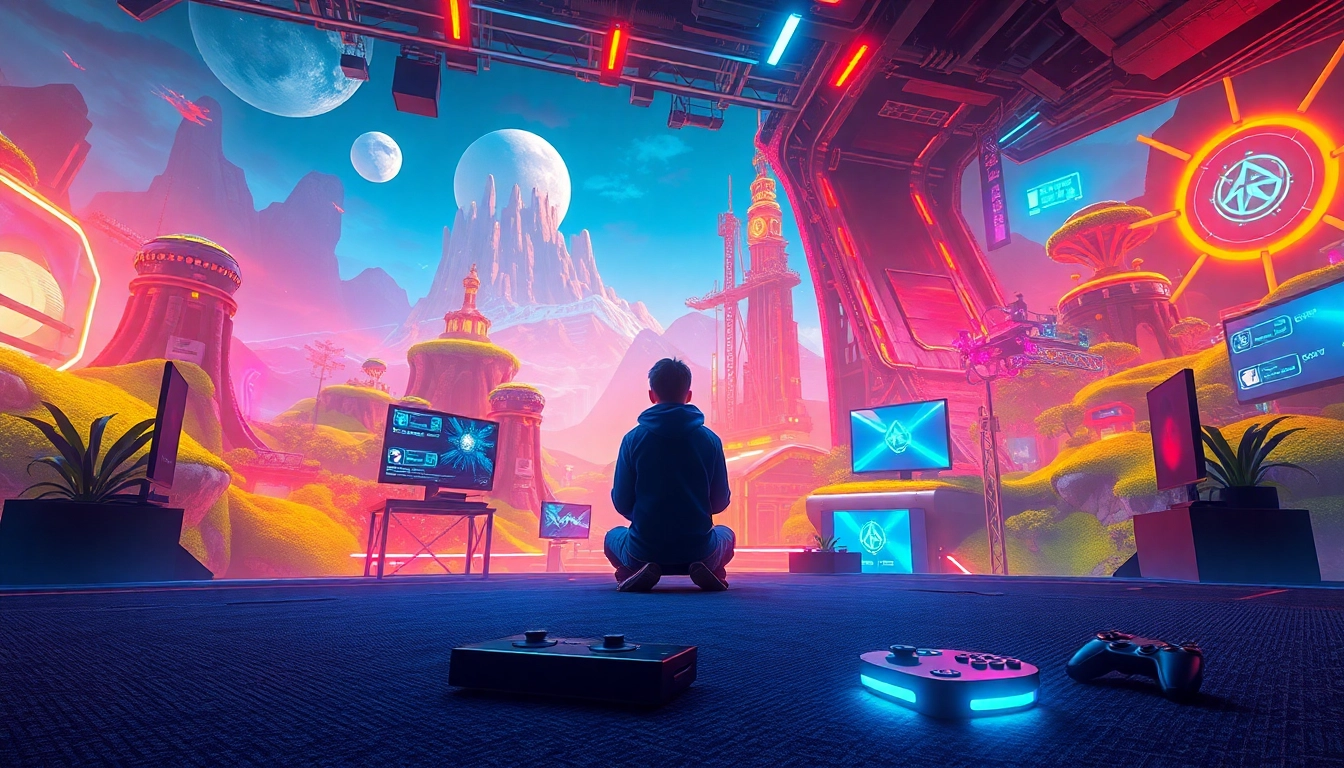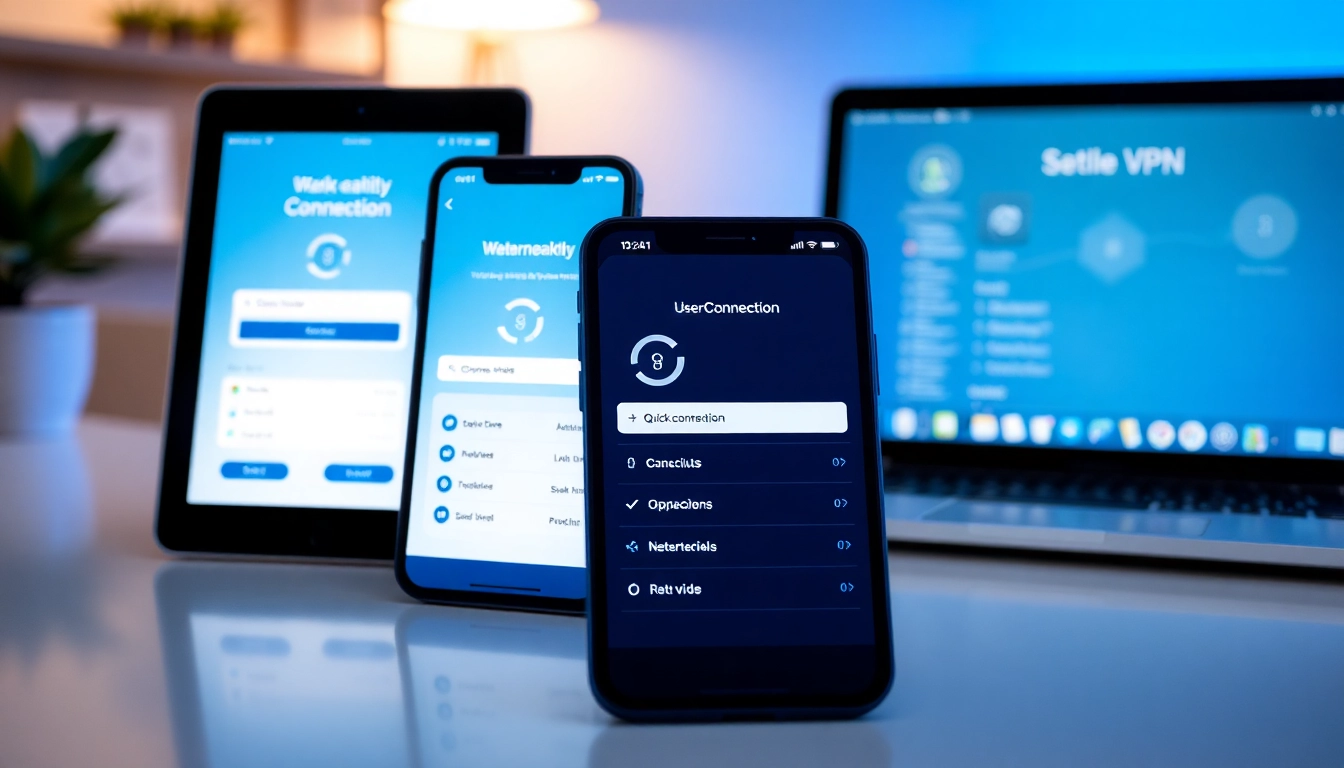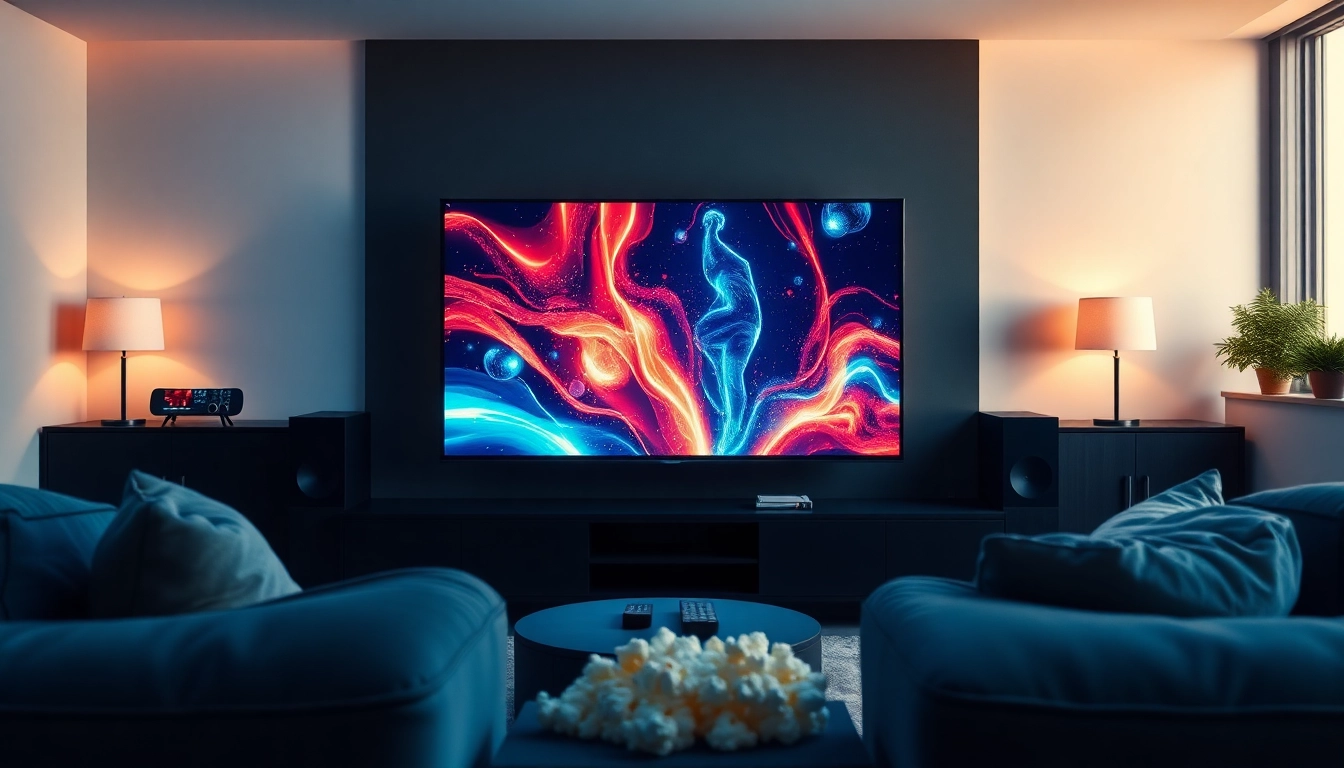Understanding the Unity3D Game Engine Basics
What is Unity3D?
Unity3D, often simply referred to as Unity, is a powerful cross-platform game engine developed by Unity Technologies. It is widely recognized for its flexibility, accessibility, and extensive support for various platforms like Windows, Mac, iOS, Android, and even consoles such as PlayStation and Xbox. The engine allows developers of all skill levels to design, develop, and deploy interactive 2D and 3D content efficiently.
Unity3D has gained substantial traction in the game development industry, thanks to its user-friendly interface and vast library of resources. It also supports unity3d game engine features that allow for immersive experiences in games, virtual reality, and augmented reality applications. As a result, it has become a favorite tool among indie developers and large studios alike.
Key Features of Unity3D Game Engine
- Cross-Platform Development: Unity enables developers to create games for multiple platforms without rewriting code for each system.
- Asset Store: The Unity Asset Store provides a vast collection of ready-to-use assets, including 3D models, scripts, sounds, and shaders, which can dramatically speed up development time.
- Visual Scripting: The engine offers visual scripting tools like Bolt that allow developers to create complex logic without writing any code.
- Built-in Physics: Unity includes a robust physics engine that enables realistic simulations and interactions within the game environment.
- Real-time Rendering: With features like High Definition Render Pipeline (HDRP) and Universal Render Pipeline (URP), Unity delivers stunning graphics and performance across all devices.
- Community & Documentation: Unity has a rich community that continuously shares tutorials, forums, and documentation, providing robust support for troubleshooting and learning.
How Unity3D Compares to Other Engines
When comparing Unity3D to other game engines such as Unreal Engine and Godot, several differences emerge. For starters, Unity tends to be more approachable for beginners, featuring a straightforward interface that simplifies the game development process. Unreal Engine, on the other hand, is renowned for its high-fidelity graphics and is the choice for developers working on AAA titles. However, it presents a steeper learning curve and requires a stronger understanding of coding.
Godot is an open-source alternative that appeals to developers interested in free software. Its simplicity and lightweight nature are attractive, but it lacks some advanced features found in Unity. Ultimately, Unity3D’s blend of powerful features, extensive asset library, and a supportive community make it a compelling choice for both novice and experienced developers alike.
Setting Up Your Unity3D Development Environment
Recommended System Requirements
Setting up your Unity3D development environment requires ensuring that your system meets its recommended specifications. Here are the suggested minimum system requirements for an optimal experience:
- Operating System: Windows 10 64-bit or macOS 10.13 or later
- Processor: Intel Core i5 or equivalent
- RAM: 8 GB or more
- Graphics Card: DirectX 11 or 12 compatible
- Storage: SSD with 15GB or more of available space
These specifications can vary based on the complexity of your project. For VR development, for instance, you may need a more powerful setup with enhanced graphic capabilities.
Installing Unity3D: A Step-by-Step Guide
The installation of Unity3D starts with downloading the Unity Hub from the official Unity website. Here’s a brief step-by-step guide:
- Go to the Unity website and select “Get Started” or “Download Unity Hub.”
- Run the installer for Unity Hub and follow the prompts to install.
- Open Unity Hub, create a Unity account or log into your existing one.
- From the “Installs” section, click on “Add” to install the latest version of Unity.
- Select the modules you need (such as support for different platforms) and click “Install.”
- Once installed, you can start a new project from the “Projects” tab in Unity Hub.
Exploring the Unity3D Interface
Upon opening Unity, you are greeted with its interface, which may seem overwhelming at first. However, familiarizing yourself with the key components can significantly enhance your workflow:
- Scene View: This is where you build and arrange your game objects visually.
- Game View: Shows what your game will look like to players.
- Hierarchy Panel: Lists all game objects in the current scene, allowing for easy organization and manipulation.
- Inspector Window: Displays properties and settings of the currently selected object, allowing you to tweak components and values as needed.
- Console Window: Essential for debugging, this window shows logs, warnings, and errors generated during development.
As you build your game, exploring these components will be critical for editing properties and testing various aspects of your game mechanics.
Game Development Fundamentals with Unity3D
Creating Your First Game Project
Creating your first game project is an exciting milestone. To do this in Unity3D, follow these steps:
- Open Unity Hub and click on “New Project.”
- Choose a template (2D or 3D)—for beginners, starting with a 3D template is recommended.
- Name your project and choose a location to save it.
- Click on “Create.”
- Once in the Unity Editor, familiarize yourself with the different panels and build a small scene.
Your first project might be something simple like a platformer or a maze runner, allowing you to explore Unity’s capabilities without feeling overwhelmed.
Understanding Game Objects and Components
In Unity3D, everything is a GameObject—these can be characters, props, scenery, or even cameras. Each GameObject has components that define its properties and behaviors. Here are some examples:
- Transform: This component controls the position, rotation, and scale of the GameObject in the 3D space.
- RigidBody: This enables physics simulations for the object, allowing it to react to physics forces like gravity.
- Collider: Defines the shape of the GameObject for physical collisions.
- Scripts: Custom behaviors defined by the developer using C#.
Understanding how to manipulate these components is crucial for game development, as they serve as the building blocks of your game.
Implementing Physics and Animations
Unity3D’s built-in physics engine makes it easier to simulate realistic interactions between GameObjects. Here’s how to implement physics and animations:
- Adding Physics: To make an object react to forces or collisions, add a RigidBody component. You can set its mass, drag, and use gravity to control how it behaves in the game.
- Creating Animations: Unity’s Animation window allows you to create animations by choosing a GameObject, adding an Animation component, and then recording the desired changes over time.
- Using Animator: The Animator component allows for advanced animations using state machines, which can control transitions based on game conditions.
By mastering physics and animation, you can create dynamic and engaging gameplay that keeps players immersed.
Advanced Techniques in Unity3D Game Development
Utilizing Unity3D Asset Store Effectively
The Unity Asset Store is a treasure trove of resources that can save you time and enhance your game’s quality. Here are key strategies for effectively utilizing the Asset Store:
- Search Filters: Use the search filters to find the specific assets you need, whether they are 3D models, sound effects, or complete project templates.
- Review Ratings: Check ratings and reviews to ensure you are choosing quality assets that others have found useful.
- Free vs. Paid Assets: Consider starting with free assets to build your prototype. Once you gain traction, you can invest in higher-quality paid assets.
- Documentation: Many assets come with documentation or tutorials—take advantage of these to understand how to implement them effectively in your project.
Optimizing Game Performance in Unity3D
As projects grow in complexity, optimizing game performance becomes crucial for both PC and mobile gameplay. Here are several strategies to ensure your game runs smoothly:
- Reduce Draw Calls: Combine meshes and use texture atlases to minimize the number of draw calls. This drastically improves rendering performance.
- Use Level of Detail (LOD): Implement LOD to reduce the polygon count of objects as they move farther from the camera.
- Optimize Scripts: Profile and optimize your code. Unity provides a Profiler tool to identify performance bottlenecks.
- Efficient Asset Management: Compress textures and manage your assets to prevent loading issues and improved memory usage.
By prioritizing performance, you ensure a smoother user experience, leading to higher player satisfaction and retention.
Integrating Multiplayer Features in Unity3D
Multiplayer functionality can significantly enhance the player experience. Unity3D supports various networking solutions to integrate multiplayer features effectively:
- Unity Multiplayer Toolkit: This provides built-in solutions for creating and managing multiplayer games. You can create a lobby system, manage player connections, and sync game states.
- Photon Unity Networking: A popular third-party solution. Photon allows for real-time multiplayer capabilities and easier implementation, especially for indie developers.
- Server Hosting: Decide whether you will host a dedicated server or use peer-to-peer connections based on your project’s needs.
For successful multiplayer integration, remember to test extensively to ensure synchronization issues do not affect gameplay.
Publishing and Marketing Your Unity3D Game
Steps to Publish Your Game on Various Platforms
Once your game is ready, the publishing process can vary depending on the target platform. Below are the general steps involved in publishing games:
- Build the game for the desired platform in Unity.
- Follow specific guidelines for each platform (like Steam, Google Play, and the Apple App Store) to prepare for submission.
- Test your game thoroughly on the intended platforms to ensure performance and compatibility.
- Create a marketing plan to build an audience before launch, which includes trailers, demos, and beta testing.
- Submit your game for review and address any feedback from platform managers.
Marketing Strategies for Unity3D Games
Marketing your game is essential for reaching your audience and driving sales. Consider these strategies:
- Social Media Presence: Use platforms like Twitter, Instagram, and Discord to engage with your players and share updates.
- Press Kits and Outreach: Create press kits and reach out to gaming journalists and influencers to generate buzz.
- Early Access and Beta Testing: Involve your audience early by offering early access or beta tests to gather feedback and create community engagement.
- Use Trailers and Gameplay Videos: Create professional trailers that capture the essence of your game to share on platforms like YouTube.
Effective marketing can make a significant difference in a game’s success and player reception upon launch.
Measuring Success: KPIs for Game Developers
To evaluate the success of your game, it’s important to track key performance indicators (KPIs). Here are some critical KPIs to consider:
- Downloads and Active Users: Monitor how many users download your game and how many continue to play regularly.
- Retention Rates: Analyze how many users return to play your game after their first experience, typically measured at day 1, day 7, and day 30.
- Revenue Metrics: Track in-game purchases, ad revenue, and overall sales to understand your game’s financial performance.
- User Feedback: Gather qualitative data from user reviews and engagements to identify areas for improvement.
Measuring these KPIs will not only help determine your game’s success but also inform future projects and updates.


